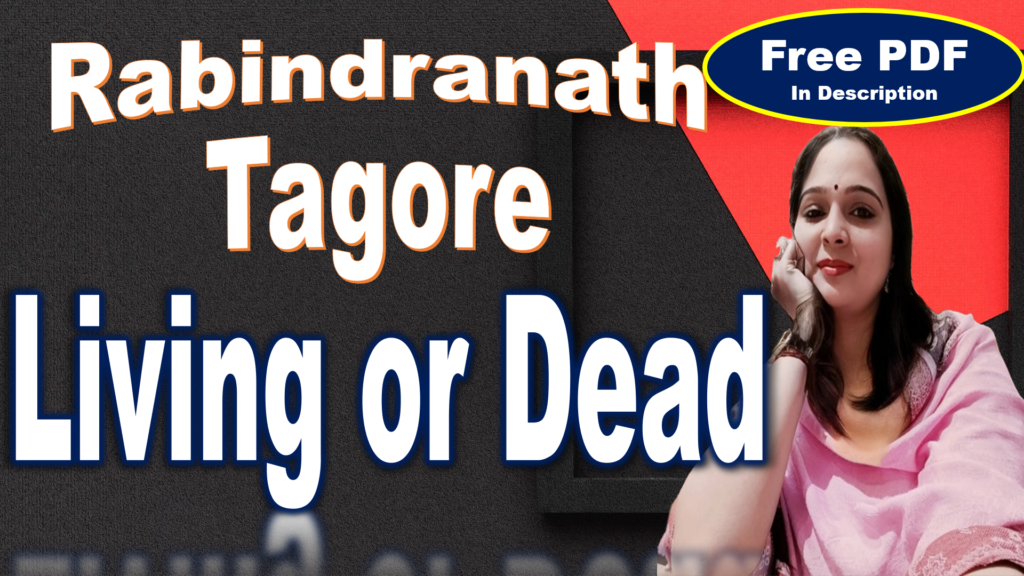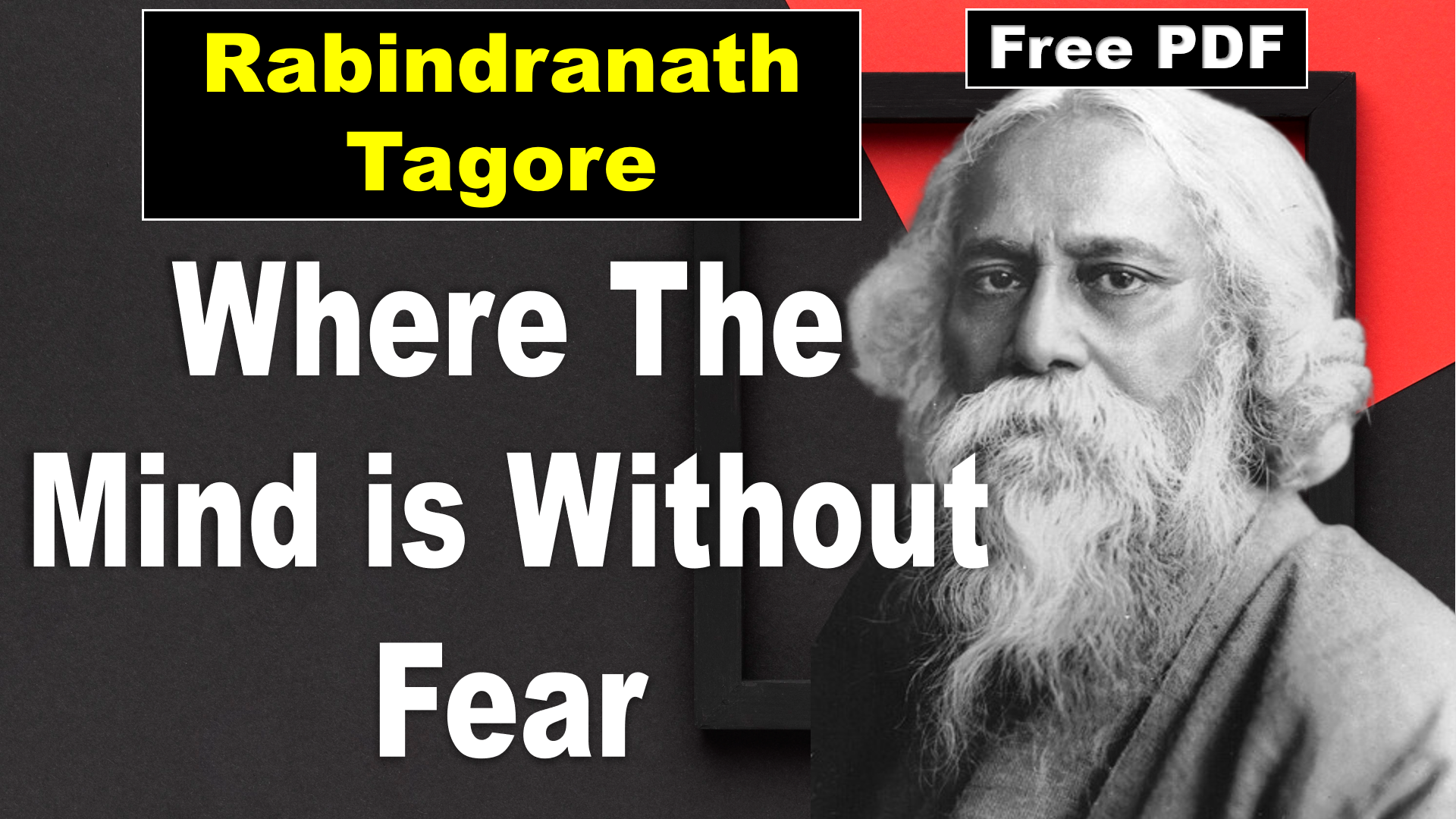
Essay Type Questions
Q. Kadambini’s plight/the irony and the pathos in the story.
A. Kadambini’s plight in “Living or Dead” is marked by profound irony and pathos, creating a poignant narrative that explores the complexities of societal expectations, personal identity, and the blurred boundaries between life and death.
Irony in Kadambini’s Plight:
Death as Liberation:
Irony: Kadambini’s physical death becomes a form of liberation for her. In returning from the dead, she challenges societal norms and expectations, gaining a newfound freedom.
Significance: The very act meant to confine her (death) becomes the catalyst for her liberation, emphasizing the irony that societal norms and expectations are not absolute.
Veil as a Mask:
Irony: Kadambini uses her veil as a mask to navigate societal expectations, concealing her true identity. The veil, traditionally a symbol of modesty for widows, becomes a tool for Kadambini to challenge norms subtly.
Significance: While the veil is meant to signify conformity, its use by Kadambini is ironic as it becomes a means of asserting her agency and defying expectations.
Return to the Inner Courtyard:
Irony: Kadambini’s return to her in-laws’ house is ironic because it challenges the expected trajectory of a widow’s life. Instead of conforming to societal norms, she confronts her past, defying the conventional expectations placed on widows.
Significance: The irony lies in the fact that her return to the inner courtyard, a symbol of traditional norms, becomes a platform for her rebellion against societal constraints.
Pathos in Kadambini’s Plight:
Loneliness and Alienation:
Pathos: Kadambini experiences profound loneliness and alienation due to her ambiguous state between life and death. She is unable to fully belong to the world of the living or the dead.
Significance: The pathos lies in the poignant portrayal of Kadambini’s emotional isolation, emphasizing the human cost of societal expectations and the struggle for personal identity.
Longing for Connection:
Pathos: Kadambini’s deep affection for her nephew, Shatish, and her desire to connect with him evoke a sense of longing and unfulfilled love. Her attempts to nurture familial bonds are thwarted by societal norms.
Significance: The pathos emerges from the thwarted yearning for connection, highlighting the emotional toll of societal expectations on personal relationships.
Desperation and Self-Harm:
Pathos: Kadambini’s desperate attempts to prove her existence, including breaking a bowl against her brow, reflect her emotional turmoil and the extreme measures taken to make others acknowledge her presence.
Significance: The pathos lies in the portrayal of Kadambini’s desperation, accentuating the emotional struggle of a woman caught between societal expectations and her own sense of self.
Conclusion:
Kadambini’s plight is characterized by the poignant interplay of irony and pathos. The irony arises from the unexpected ways in which death liberates her, while the pathos emanates from the emotional toll of societal expectations, alienation, and unfulfilled connections. The narrative invites readers to empathize with Kadambini’s internal conflict and the profound impact of societal norms on individual lives.
Q. “At the end by dying, kadambini proved that she was not dead.” Kindly explain.
A. The statement “At the end, by dying, Kadambini proved that she was not dead” refers to a critical and symbolic moment in Rabindranath Tagore’s story “Living or Dead”. This paradoxical event occurs when Kadambini, after returning to her in-laws’ house and encountering disbelief about her existence, makes a desperate attempt to prove her aliveness.
Here’s an explanation of the significance behind this statement:
Symbolism of Death and Rebirth:
Kadambini’s physical death earlier in the narrative symbolized a break from societal expectations and norms. However, her return challenged the conventional understanding of life and death.
The act of dying again serves as a symbolic gesture, representing a form of rebirth or renewal. Kadambini, by defying the certainty of death, asserts her existence and challenges societal constructs.
Desperation and Assertion:
Kadambini’s desperate act of self-harm, breaking a bowl against her brow until blood gushes out, is a dramatic attempt to make others acknowledge her presence.
This desperate act serves as a powerful assertion of her existence. By inflicting harm upon herself, Kadambini intends to prove that she can experience pain, thereby emphasizing her living, tangible reality.
Defiance of Societal Norms:
Kadambini’s actions at the end defy societal norms that dictate the expected behavior of widows. The act of breaking the bowl and shedding blood challenges the prescribed role of a grieving widow and emphasizes her agency.
This defiance is a continuation of her rebellion against societal expectations, reinforcing the idea that her existence transcends the boundaries set by societal conventions.
Metaphorical Rejection of Death:
The act of self-harm and shedding blood can be interpreted metaphorically as a rejection of death. Kadambini’s insistence on being alive, even if it means going to extreme lengths, symbolizes her determination to break free from the constraints of societal perceptions.
In conclusion, the statement encapsulates the complex interplay of symbolism and defiance in Kadambini’s character. Her act of dying, in this context, becomes a powerful tool for asserting her existence and challenging societal norms, highlighting the nuanced exploration of life, death, and societal expectations in Tagore’s narrative.





